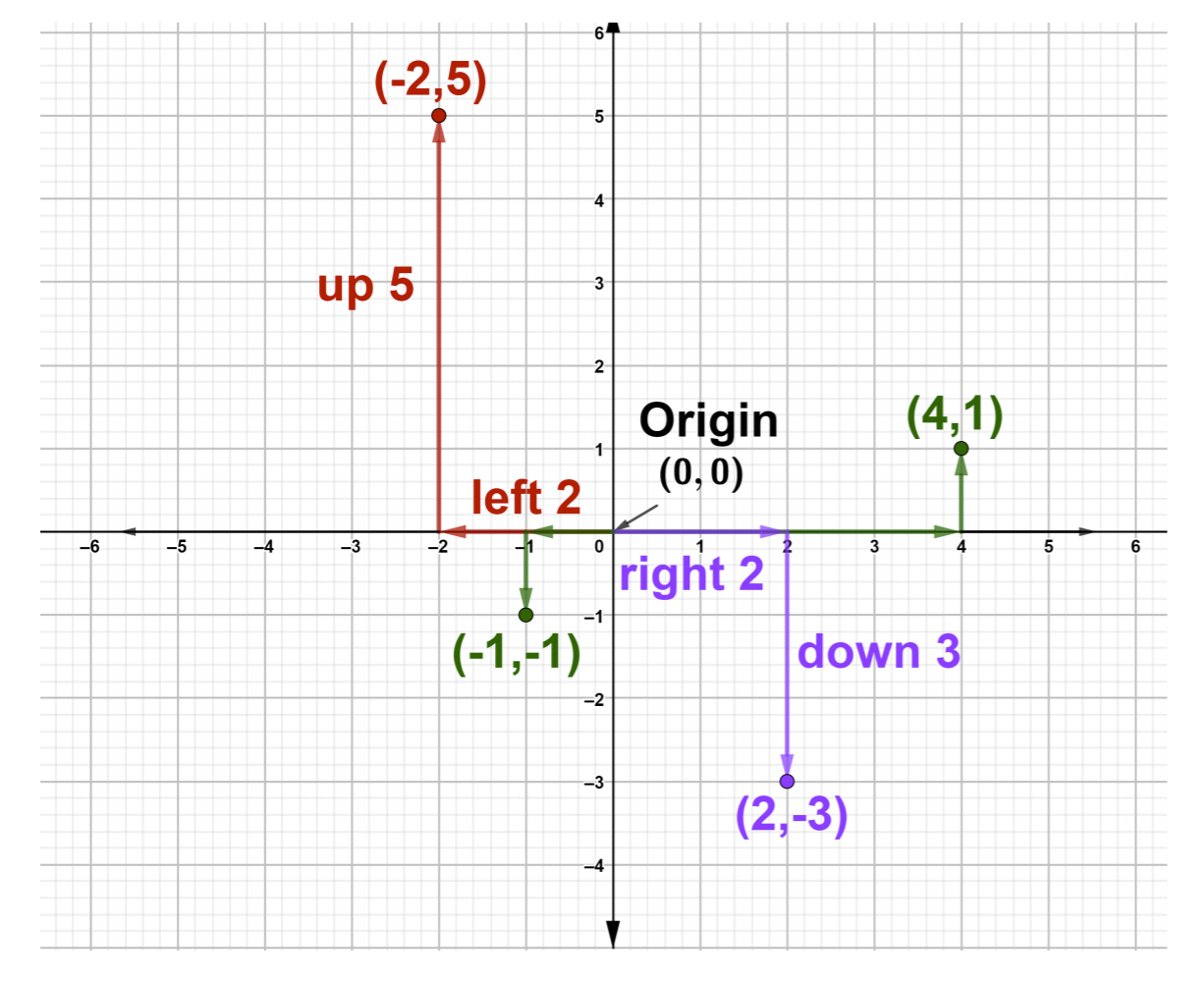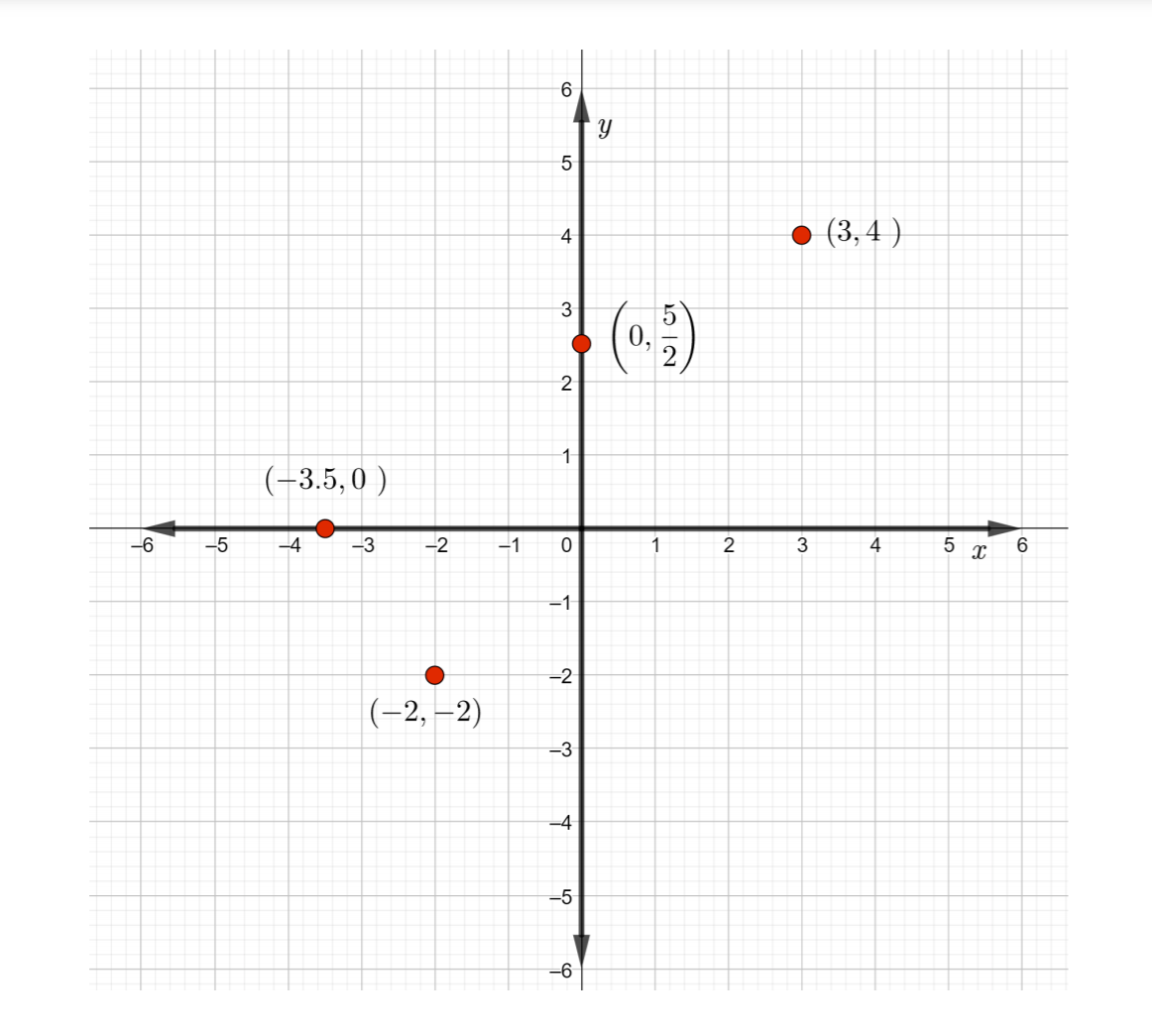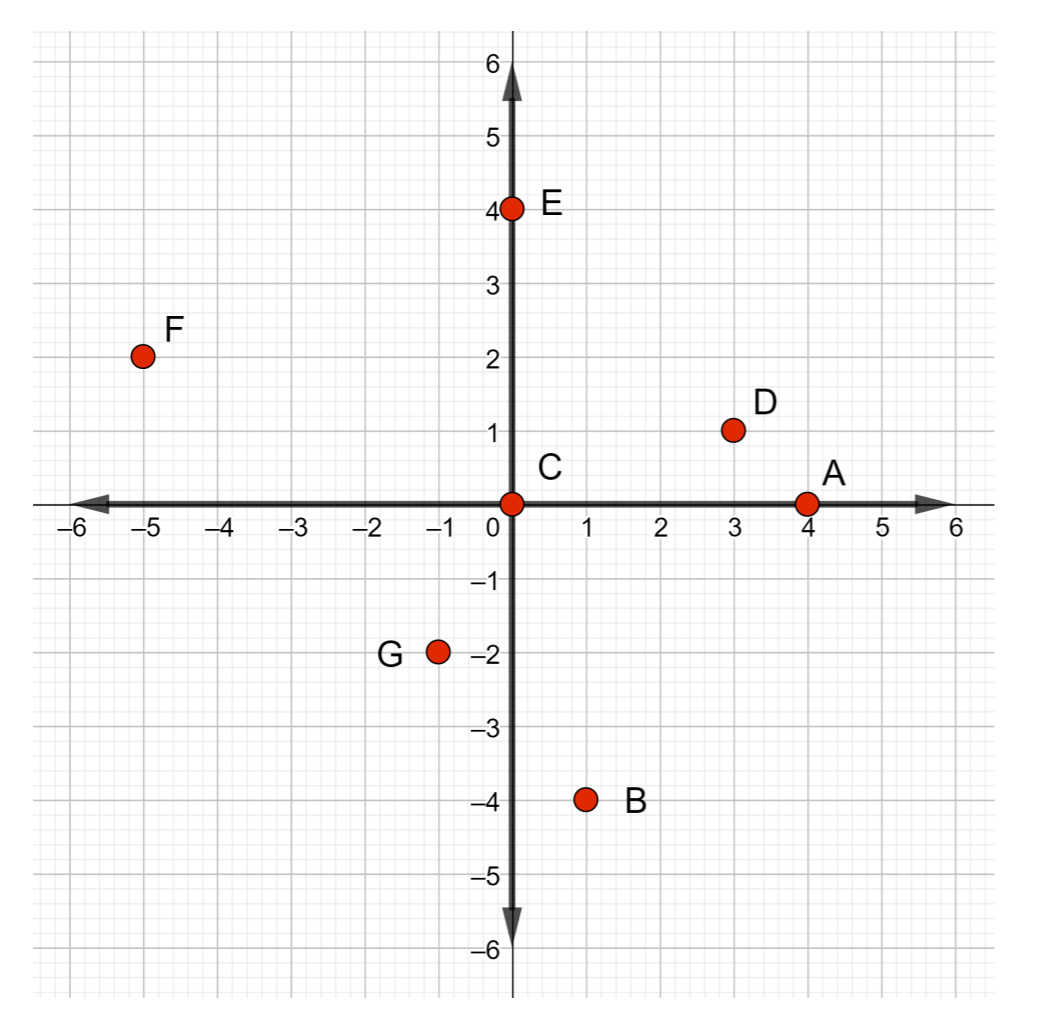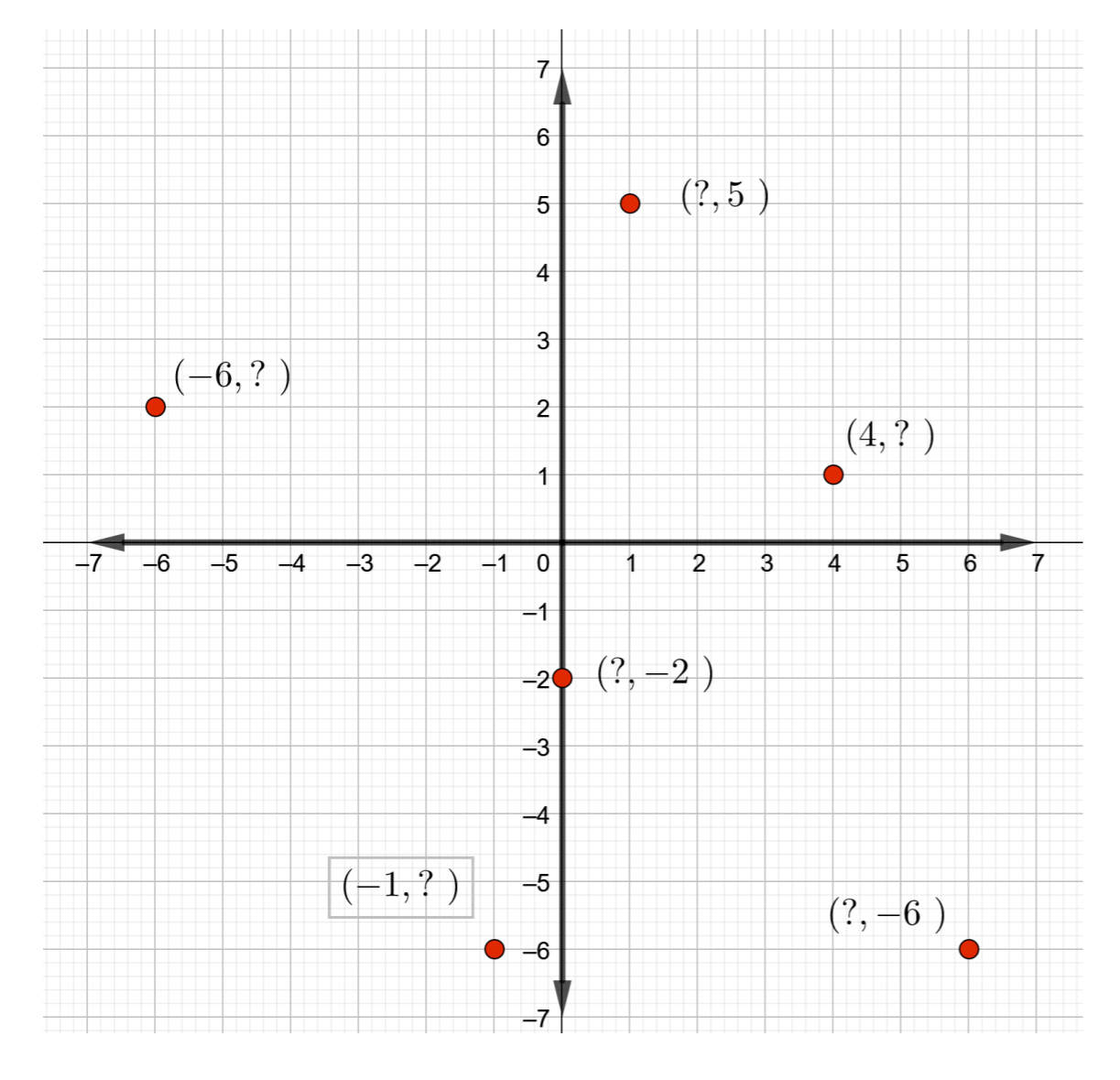2.2: Ordered Pairs
( \newcommand{\kernel}{\mathrm{null}\,}\)
Ordered pairs are pairs of numbers used to locate a point in the rectangular coordinate plane and written in the form (x,y), where x is the x-coordinate and y is the y-coordinate.
The location of the ordered pair in the quadrants will determine the sign of the x and y coordinates, as shown in the previous section, figure above. Thus, the signs of the ordered pairs (x,y) are summarized as follows,
- If (x,y) is in Quadrant I then both x and y are positive.
- If (x,y) is in Quadrant II then x is negative and y is positive.
- If (x,y) is in Quadrant III then both x and y are negative.
- If (x,y) is in Quadrant IV then x is positive and y is negative.
Note: Points on the perpendicular axis in a rectangular plane do not belong to any of the quadrants.
To locate a point in the coordinate plane, use a process called graphing a point. This process can also be called plotting a point. Always start at the origin and move right or left to locate the x-coordinate and move up or down to locate the y-coordinate.
To graph or plot (−2,5) on a coordinate plane, start at the origin and move 2 units to the left, because the x-coordinate −2 is negative, then move up 5 units because the y-coordinate 5 is positive and draw a dot. notice that our point is in quadrant II. To graph the point (4,1), start at the origin and move 4 units to the right and 1 unit up. Similarly, graph the points (−1,−1) and (2,−3), as shown in the figure below.

Careful! In the previous chapter the notation (p,q) was used to represent an absolute value inequality solution in interval notation. This section introduces ordered pairs that use the same parentheses representation. Make sure not to confuse the interval notation with the ordered pairs notation.
Graph the given points on the same rectangular coordinate plane, and state where each point lies. If a point does not lie in any of the quadrants, state the axis on which it lies.
- (3,4)
- (−2,−2)
- (0,52)
- (−3.5,0)
Solution
- Both x and y coordinates are positive. start at the origin, move 3 units to the right then, move up 4 units and mark the point (3,4) The point lies in quadrant I
- Both x and y coordinates are negative. start at the origin, move 2 units to the left, then, move 2 units down and mark the point (−2,−2). The point lies in quadrant II.
- Since the x-coordinate is 0, start at the origin and don’t move right or left. Since the y-coordinate is positive, move 52 units or 2.5 units up. Label point (0,52). The point lies on the y-axis.
- Sine the x-coordinate is negative, start at the origin and move 3.5 units to the left. Since the y-coordinate is 0, don’t move up or down. label the point (−3.5,0). The point lies on the x-axis.

Determine the coordinates of the points labeled in the figure below.

Solution
To plot any point in the coordinate plane, start at the origin then move according to the sign of the given coordinates as follows,
- Point A: Start at the origin and move 4 units to the right. The x-coordinate is 4. There is no vertical movement up or down, so the y-coordinate is 0. Hence, Point A has coordinates (4,0)
- Point B: Again, start at the origin and move 1 unit to the right and 4 unit down. Hence, point B have coordinates (1,−4)
- Point C: Since the x-coordinate is 0, then start at the origin and don’t move right or left. The y-coordinate is 0 as well, so don’t move up nor down. Thus, the coordinates of point C are (0,0)
- Point D: From the origin, move 3 units to the right, then 1 unit up. Thus, coordinates of point D are (3,1)
- Point E: Start at the origin and stay there because the x-coordinate is 0, then move 4 units up. Thus, Point E have coordinates (0,4).
- Point F: Move 5 units left of the origin and 2 units up. Point F have coordinates (−5,2)
- Point G: Move 1 unit left of the origin and 2 units down. Point G have coordinates (−1,−2)
- What are the x and y coordinates in (−3,2) and (2,−3) ? Are they the same Point?
- Plot the following points on the same rectangular coordinate plane, and state the quadrant in which each point lies or the axis on which it lies. (−1.5,2),(0,−3),(5,2.5),(−12,−12),(312,−72),(−3,3),(−2,0)
- Determine the coordinates for each given point in the figure below.

Figure 2.2.4 - Determine the coordinates for each given point in the figure below.

Figure 2.2.5


